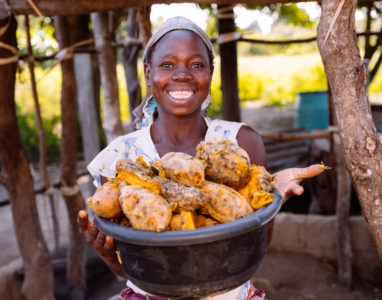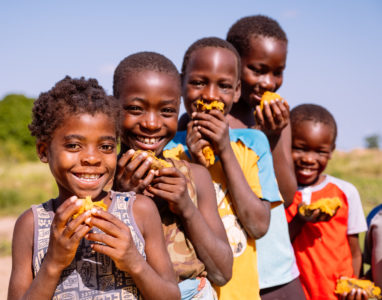
A healthy diet ensures adequate calories and nutrients—with a balanced, diversity of foods from several different food groups—but for much of the world’s population, it is a luxury they can’t afford. According to the State of Food Security and Nutrition in the World 2020 report (SOFI), about 2 billion people globally lacked access to sufficient safe and nutritious food in 2019, and the number has risen since the COVID-19 pandemic began.
Helping everyone achieve nutrient adequacy would prevent all forms of malnutrition, and the non-communicable diseases it results in, which are predicted to cost the world USD 1.3 trillion annually by 2030. Yet cost currently hinders access to healthy diets by many of the world’s poor, and the majority of Africans. As a result of food insecurity and different forms of malnutrition, both child stunting and adult obesity are on the rise on the continent.
On 9 September, a diverse panel of experts explored ways to increase the supply and demand for African food products that fuel diverse and healthier diets. This was during a session of the virtual Africa Green Revolution Summit (AGRF 2020)—hosted by the government of Rwanda—titled “Growing Africa’s Food – African Leaders Unpack Nutrition Indicators”.
The Food Systems Dashboard
Lawrence Haddad, Executive Director for the Global Alliance for Improved Nutrition (GAIN), highlighted the Food Systems Dashboard, a tool that describes, diagnoses and helps users understand what needs to be done to transform food systems.
The dashboard —useful for policy makers, among others—makes use of 170 indicators to measure components, drivers, and outcomes of food systems at the country level. It relies on data pooled mostly from public sources.
“Food systems are complex; we need data to demystify them, otherwise we are flying blind”, said Haddad, who was awarded the 2018 World Food Prize for his: “relentless leadership and advocacy in mobilizing political will to make nutrition the focal point of development strategies.”
Biofortification of staple crops to accelerate nutrition gains
Focusing on a highly successful strategy for getting nutritious foods to vulnerable populations, Barbara Wells, Director General of the International Potato Center (CIP), called attention to biofortification— the process of using conventional breeding to increase the nutrient density of food crops.
Biofortification is enabling a growing number or rural and urban consumers across Africa to access healthier foods in a cost-effective way. The CGIAR has led efforts to breed and disseminate biofortified staple crops with higher levels of vitamin A, iron or zinc – essential micronutrients for human health and child development.
“Biofortified varieties of 11 staple food crops are now grown in more than 30 countries, benefitting about 50 million people”, noted Wells.
CIP and its partners have bred and delivered biofortified orange-fleshed sweetpotato planting material to 6.8 million households at risk of vitamin A deficiency in 16 African countries, benefiting over 30 million people. Those pro-vitamin-A sweetpotato varieties have been disseminated as part of a holistic approach that includes farmer training and nutrition education.
“We have learned that to improve people’s nutritional uptake, we must invest in nutrition education at the community level,” Wells added.

Data availability and nutrition education
Ndidi Okonkwo Nwuneli, co-founder of the Nigerian company AACE Foods, further stressed the importance of nutrition education through partnerships with media and faith-based organization operating in communities.
An entrepreneur whose business was born out of a desire to address the high rates of stunting among Nigerian children, Ndindi welcomed the creation of the Food Systems Dashboard and called for country specific nutrition indicators.
For Thato Moagi-Mugonda, a farmer specializing in African indigenous crops, nutrition indicators could indeed influence the type of crops she grows on her farm.
“People in urban spaces still have a demand for nutritious, indigenous food products” she noted. To stimulate this demand, she called for innovative approaches, such as working with chefs in urban areas, to showcase ways to make these foods ‘cool’ to consumers. CIP and its partners are working with chefs in urban areas to stimulate demand for the nutritious OFSP, incorporating it into modern household diets.
Policies that transform food systems
Johan Swinnen, Director General of International Food Policy Research Institute (IFPRI) reiterated the need for better and more representative nutrition data for decision makers. This would entail not only asking the right questions but also presenting the data in an understandable way in order to support appropriate decisions for different groups of people.
In closing, the discussion returned to the importance of good quality data for everyone working towards healthier and nutritious diets in Africa.
“Data availability is key, but not the only solution. We need people to use this data to transform lives”, concluded Haddad.
Article written by Vivian Atakos – CIP Regional Communications Specialist, Africa
